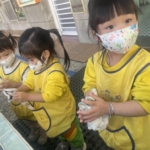(a) Enteroviruses are highly infectious, but simple hygiene practices can effectively reduce the chance of infection.
(b) Prevention of enterovirus:
1. Wash your hands regularly and develop good personal hygiene habits.
2. Eat a balanced diet, exercise moderately and get enough sleep to enhance immunity.
3. When you are sick, seek medical attention as soon as possible and take time off to rest at home.
4. Pay attention to the hygiene and ventilation of the home environment.
5. Avoid crowded public places with poor air circulation during the epidemic.
6. Avoid contact with suspected patients, especially pregnant women, newborns and young children.
7. Newborns can be breastfed more often to improve their resistance.
8. Children's toys (especially furry toys) should be cleaned and sanitized frequently.
9. Caregivers or contacts of young children should pay special attention to personal hygiene.
(iii) Enterovirus sterilization methods:
1. Options for sterilization methods:
(1) Enteroviruses are resistant to acids and many chemicals, such as anti-microbial agents, cleaning and disinfecting agents, and alcohol, which do not kill enteroviruses.
(2) Aldehydes and halogenated disinfectants (e.g., commercially available chlorine-containing bleach) can inactivate enteroviruses. A residual chlorine level of 0.3 to 0.5 ppm in the water is sufficient to inactivate enteroviruses, whereas chlorine-containing bleach for clothing can also kill enteroviruses.
(3) Enteroviruses can survive for a few days at room temperature, a few weeks at 4℃, and a few months at freezing temperature. However, enteroviruses will lose their activity very quickly in environments above 50℃. Therefore, heat treatment of food or immersion of underwear in hot water can reduce enteroviruses.
Spread the word.
(4) Drying reduces the survival time of enteroviruses at room temperature.
(5) Ultraviolet light reduces viral activity.
2. How to make disinfectant water: Take 200ppm chlorine bleach as an example.
(1) Take 1 tablespoon of commercially available household bleach (usually at a concentration of 6 to 71 TP3T) (about 15 to 20 cc of a common soup spoon).
(2) Add 5 liters of tap water (1,250cc per bottle, 4 bottles equals to 5 liters) and mix well.
3. Environmental disinfection highlights:
(1) No large-scale disinfection spraying is required.
(2) Only the surfaces of frequently touched objects (door handles, desks and chairs, dining tables, stair handrails), toys, play equipment, bedding and books need to be disinfected in a focused manner.
(3) The cleaned object can be moved outdoors to receive sunlight.
Extract from the Disease Control Authority




